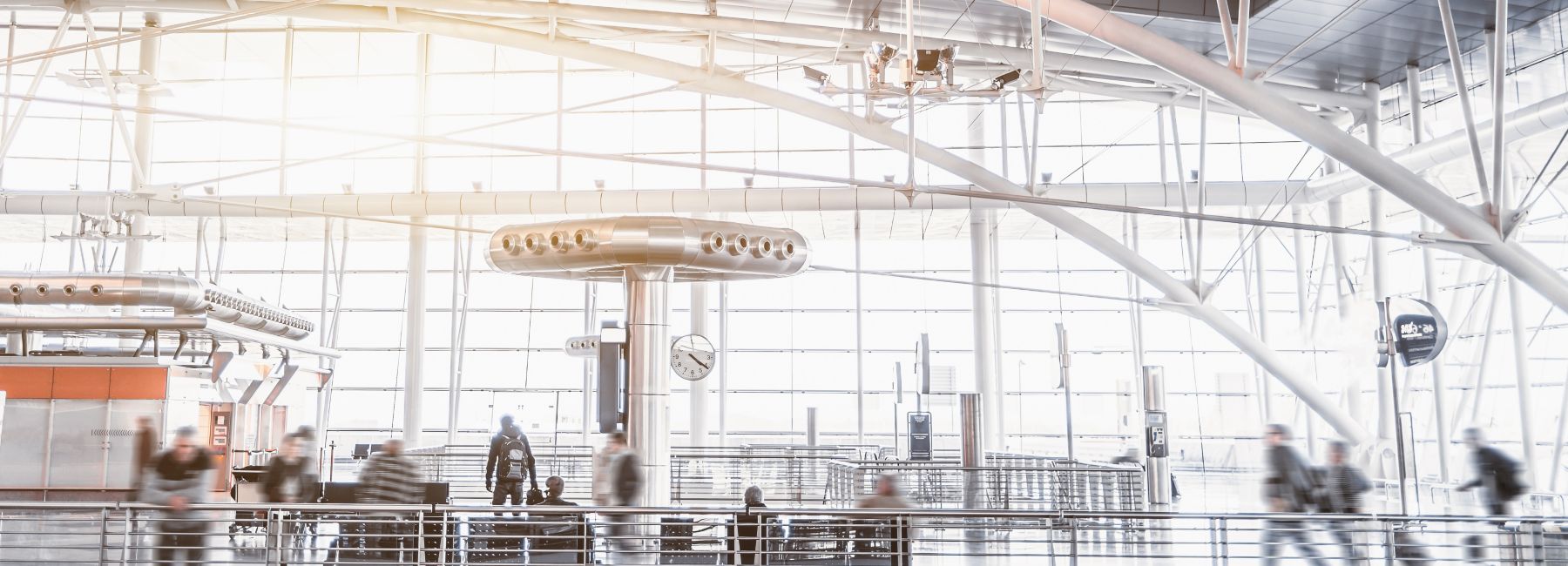Airports face a number of challenges — aging infrastructure, fluctuating demand, sophisticated security needs and, now, an unexpected global health crisis — and legacy technologies are incapable of addressing them. In other words, we cannot expect to build tomorrow’s airport using yesterday’s solutions. We need radical innovation and that calls for new technologies. Digital twin fits the bill.
A digital twin is a 3D representation of the physical world. It enables developers to visualize products and spaces and to run simulations to show how they behave in differing conditions. Here are the five main areas where a digital twin can benefit airports:
1. Ideation
Airports are continuously seeking ideas on how to transform from physical infrastructure into real, living ecosystems. That means improving the passenger journey, and one way to do that involves creating 3D virtual experiences to simulate new concepts and validate their benefits; if they prove promising, the 3D virtual experiences can be used to demonstrate value to the airport stakeholders that are responsible for securing capital funding. Building stakeholder confidence early on ensures that investments will be used wisely and can radically shorten decision cycles from years to weeks.
2. Design and engineering
A digital twin provides a collaborative environment to unite all supplier deliverables around a unique 3D mockup to converge much faster on a final design. The subcontractor’s design conditions and physical dimensions can then be verified and validated. The conformance of the final 3D design to initial requirements and FAA regulations can be readily shown. Tenants will benefit from a more controlled process and can achieve on-plan, on-cost and on-time delivery.
3. Construction
By leveraging a digital twin, project delivery teams can simulate how construction or renovations might impact airport operations. The overall operational impact of taking major infrastructure — such as a terminal — out of service, can be simulated. Once evaluated, an effective and proactive operational plan can then be put in place to minimize disruption.
4. Sales and marketing
Digital twin also opens up many opportunities for innovative marketing. For instance, new and engaging AR and VR applications (perhaps virtual shopping experiences) could be developed to entertain travelers and drive retail revenue. And digital twin could enable marketers to test new and innovative marketing concepts in a virtual environment before committing to them. Moreover, employing digital twin can reduce the need for real photo shoots and costly film sets usually involved in marketing campaigns.
5. Operations
When it comes to airport operations, there are two primary roles for digital twin technology:
- Maintenance: Digital twin provides a platform to monitor and analyze sensor information to predict asset failure. Further, it provides a diagnostic tool by simulating what went wrong. All this information is captured and communicated in 3D to the field via a work order to accelerate investigation and reduce maintenance costs.
- Passenger Flow: 3D simulation provides a better understanding of daily operations. It gives a holistic view on how planning interacts with airport activities such as construction, renovation or other events which may cause irregular operations. Mitigation scenarios can be simulated to address the impacts and shorten recovery times. This reduces costs and, turn-around times and, most importantly, helps to eliminate congested passenger flows. For this to work effectively, it is imperative that the virtual model provides a reasonable and trustworthy representation of a real-life scenario.
The airport of tomorrow
Digital twin is being used in other industries — to support the development of autonomous driving technology, for example — and delivering value and return. Airports that similarly embrace digital twin have much to gain – improving their ability to innovate for the future by encapsulating an airport’s overall environment and life cycle in a virtual environment. In an industry faced with unprecedented challenges, digital twin technology — a highly visual way of modeling, thinking and doing business — will help transform and deliver the airport of tomorrow.
Learn about DXC Travel, Transportation & Hospitality.
